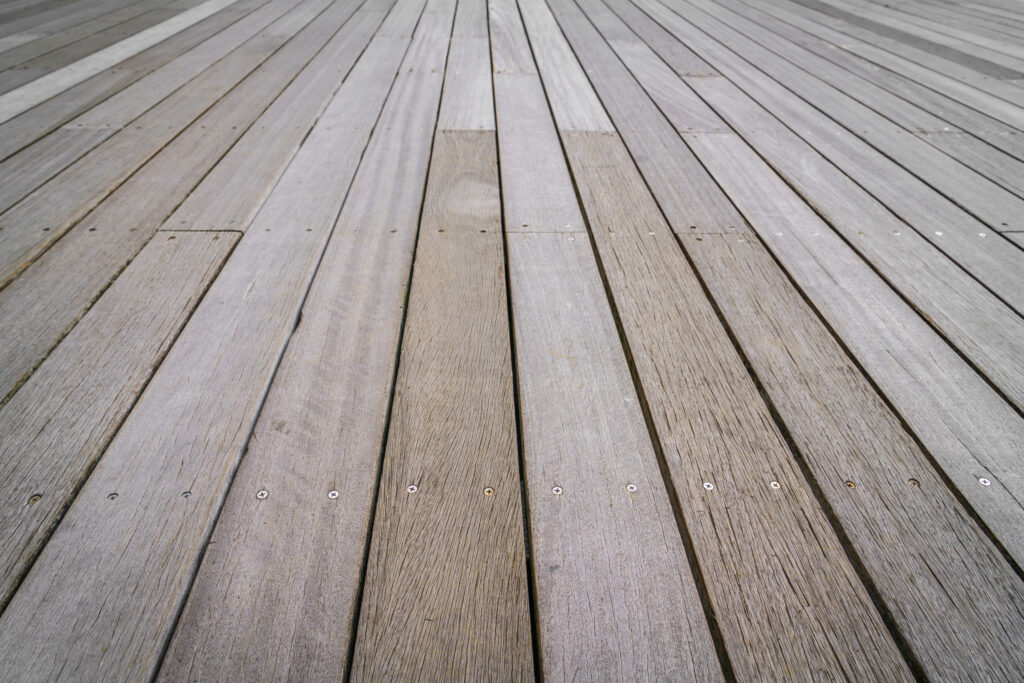Choosing the right decking material is a big decision, but so is choosing the right deck board size. It might seem like a small detail, but the size of your deck boards impacts everything from the project’s cost and difficulty to the deck’s long-term performance and overall aesthetic.
As a decking expert, I’ve seen homeowners save money and a lot of headaches just by getting this decision right from the start. Here’s a complete guide to help you choose the best deck board size for your project.
Common Deck Board Sizes
When you’re shopping for decking, you’ll encounter a few standard sizes, whether you’re looking at solid wood or low-maintenance composites.
Typical widths and thicknesses
The most common deck board size you’ll see in the U.S. is a 5/4×6 (five-quarter by six-inch). It’s the standard for both pressure-treated lumber and many composite brands. This is a “nominal” size; the actual dimensions are typically closer to 1 inch thick and 5 ½ inches wide. The slightly thinner profile makes it a budget-friendly option and is perfect for most residential decks.
For a heavier-duty look, a 2×6 (two-by-six) is another popular choice. Its actual dimensions are closer to 1 ½ inches thick and 5 ½ inches wide. This thicker board provides a more substantial feel and added rigidity, which can be useful in certain applications.
Solid wood vs. composite considerations
While both materials are often available in the same nominal sizes, their performance can differ based on that size. Solid wood boards, especially wider ones, are more susceptible to expansion, contraction, and cupping with moisture changes. Composites, on the other States, are far more dimensionally stable, so you generally don’t have to worry as much about cupping or shrinking.
How Size Affects Performance & Look
The size of your deck boards is not just a cosmetic choice. It’s a structural one that directly influences your deck’s durability and visual appeal.

Stability, shrink/swell, fastener holding
Wider boards, especially in solid wood, have a greater tendency to cup or crown over time due to moisture. This happens as the wood naturally absorbs and releases moisture. Thicker boards (like the 2×6) are more rigid and can better resist this movement than a 5/4 board. Thicker boards also provide better fastener holding power, which is crucial for a deck that will stand the test of time.
Visual scale for small vs. large decks
The size of your deck boards can dramatically change the perceived scale of your deck. For a small deck, narrower boards (around 4 inches) or a busy pattern like a herringbone can make the space feel more intricate and intentional. For a large deck, using wide planks (6 inches or more) creates a clean, expansive look that feels less cluttered. It’s a trick designers use to make a big space feel even more open and modern.
Spacing & Framing Basics
A successful deck build depends on precise measurements and a solid foundation. This is where your deck board size really comes into play.
Board gapping for drainage
Regardless of the board size you choose, proper spacing is non-negotiable. You should always leave a small gap—typically between 1/8 and ¼ inch—between each board. This gap is vital for two reasons: it allows for proper water drainage and promotes air circulation, which prevents moisture from getting trapped and causing rot or mildew. A consistent gap also allows for the natural expansion and contraction of the boards.
Joist spacing requirements
Your deck board size determines the maximum distance your floor joists can be from each other. For a standard 5/4×6 board, the typical joist spacing is 16 inches on center (OC). If you are using a thicker, more rigid board like a 2×6, you may be able to extend that spacing to 24 inches OC, which can potentially save you a lot of time and money on your framing materials.
Finish & Maintenance
The type of board you choose will influence how you protect and care for it.
Oil vs. film finishes on wood
The finish you choose for your wood deck is crucial for its longevity. A penetrating oil finish soaks into the wood fibers, protecting them from the inside out and letting the wood breathe. It will need to be reapplied periodically, but it won’t peel or flake. A film-forming finish, like some deck stains, sits on the surface of the wood. It can offer excellent protection but is susceptible to peeling, especially on horizontal surfaces that see a lot of foot traffic.
Cleaning schedules for composites
While composites are considered low-maintenance, they are not maintenance-free. To keep them looking their best, you’ll need to clean them at least once a year. A simple sweep and a wash with a soft-bristle brush and a mild soap-and-water solution is usually all it takes to remove dirt, pollen, and grime.
FAQs
Do wider boards cup more?
Yes, as a general rule, wider boards are more prone to cupping than narrower ones. Wood’s cellular structure causes it to expand and contract unevenly as it gains or loses moisture. Because there is a larger surface area across the face of a wide board, this effect is more pronounced, leading to a greater tendency to cup or warp.
Best board size for diagonals/herringbone?
For complex patterns like herringbone or diagonal layouts, narrower boards are generally a better choice. They are lighter, easier to cut, and their smaller size means any minor cupping is less noticeable. The visual complexity of these patterns also helps to camouflage any small imperfections in the boards.
Ready to find the perfect decking material for your dream deck? Contact our flooring experts today to explore our exclusive collection of engineered hardwood and LVP options.
